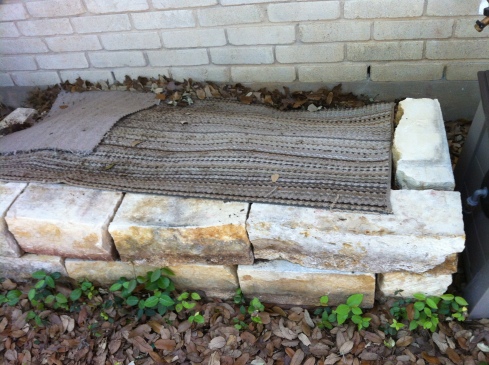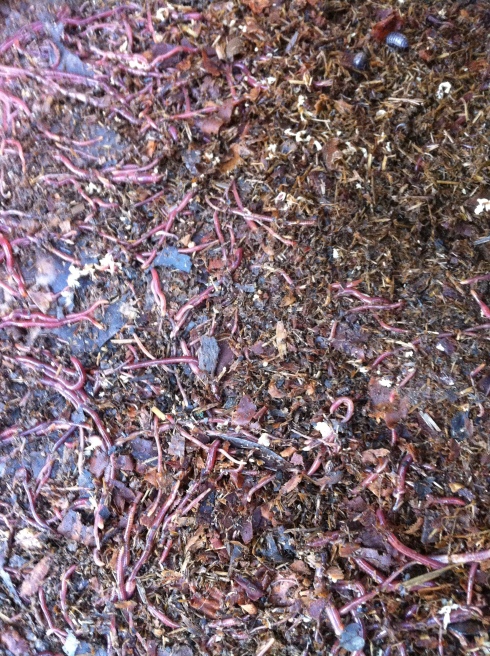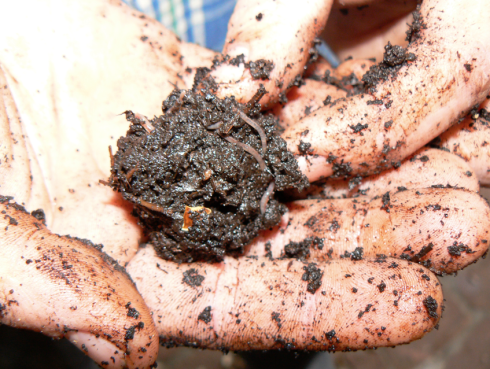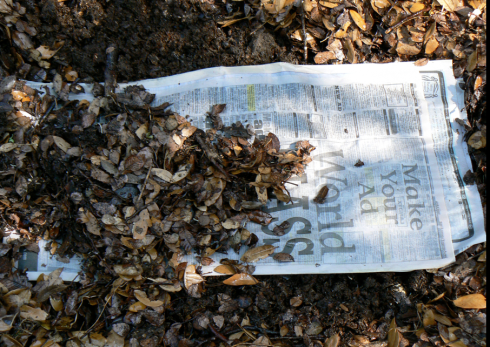Thanks to Lisa, Laura, and Rainbow Gardens. Check out “Opening up my own can of worms”.
TexasRedWorms on display at the Houston Zoo
12 JunThis week we provided Texas Jumpers and set up bins at the Houston Zoo. There is no shortage of worm food and the kids visiting will soon get to see some Texas Red Worms “Texas Jumpers” up close. With the Houston heat, we decided Texas Jumpers would be the best choice for their location and set up. Thanks Dustin and Elyssa for the opportunity it’s an honor to have our worms at the Houston Zoo.
Coons in my worm bed
19 DecFor a several days I had noticed my rugs pulled back and could tell some critter was rooting around in my worm beds. To figure out just what we were dealing with, my daughter and I set up our game cam to catch the rascal in the act.
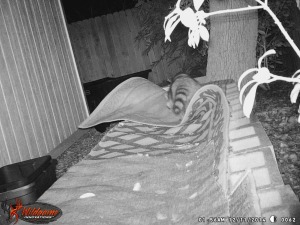
It was not a huge surprise after checking the camera, that the culprit was a masked bandit. Coon proofing can be challenging, and my attempts have failed to keep them out. Putting some heavier objects over the carpet seemed to work in a few places, but they seem to find a weak spot.
Coon proofing recommendations:
Cover your outdoor beds with plywood or hardware cloth should work.
Keep your dogs out at night. (Our dogs are sissies and sleep inside.)
We ended up catching the rascal the other night, and for now we are critter free.
DIY Raised Worm Bed.
28 AprHere’s another example of a raised bed for worms. It’s next to the house and gets full shade. It’s next to a spicket for easy access to water and/or drip irrigation. I used some landscaping blocks to construct the borders and filled it with compost. After adding a Tx Jumper Starter, I cut a piece of old carpet to cover. The cover acts as a permanent mulch blanket to keep in moisture and protects the worms. I like carpet or an old rug because they last a long time, and I believe the weight gives the worms a sense of security that promotes surfacing and feeding.
Within a few months of setting this up, the worms started to really take off. I continue to keep moist, and fed with compost. The worms do the rest. It’s always fun to pull back the carpet and see a bunch of happy worms (Texas Jumpers).
Winter Rain Adds Needed Moisture to Compost Piles and Worm Beds
9 JanEarly this week we welcomed 2.5 inches of rain providing some badly needed moisture to my compost piles and inground worm beds. The micro organisms that break down organic waste in compost piles need food, air, and water. In South Texas the missing component of that equation is usually H2O, and with a steady shower over the last couple of days we are back in business. I get asked often “why is my compost not breaking down?” and the answer is usually a lack of water. Keep your piles mixed to increase Oxygen, keep them watered if lacking in rain, and add Nitrogen bearing organic matter like grass clippings and manure to reactivate a pile. Use these winter months to get ready for spring planting and keep those compost piles fed, turned, and moist.
My Jumpers love this time of year and can be at their peak performance. Cooler temperatures and added moisture stimulate hatching of eggs and adults feeding and breeding in top layers of compost that at other times of the year maybe too hot or dry.
Add Alabama Jumpers, Red Worms to your soil or raised bed.
19 AprWhen your worm order arrives here is one way to add them to your garden, raised bed, soil. Your TexasRedWorms.com farm is a great place to raise your worms, but soon you will need to harvest the worms in order to make room for more. You can use all or a portion of your worms. In this example I am adding a box of Alabama Jumpers or as I like to refer to them “Texas Jumpers” to a raised bed I have prepared.
1. Choose a location preferably a shady spot that you can keep somewhat moist. If you are adding to a full sun area be sure to cover with a few inches of mulching material to protect from the sun and to retain moisture. Leaves, newspaper, straw will work fine. Morning or evening are the best time to add your worms.
2. Pre-wet the area you have chosen to prepare a nice moist environment for your worms to settle in.
3. You will need to dig a small hole about the size and depth of the box or container of your worms and contents.
4. Empty contents worms and compost into the hole.
5. Cover with a section of wet newspaper. This will keep the worms cool and protected from drying out giving them an opportunity to settle in to their new home. The Alabama Jumpers will eventually spread out on their own. Red Worms and European Nightcrawlers will stay were they are fed and are not going to spread like the tunneling Jumpers. In the event you are adding Red Worms or European Nightcrawlers you will add a handful of kitchen scraps to the same location you placed your worms every few days. As your worm population grows you will learn how often to feed based on how fast they work through the organic material. The Alabama Jumpers are great for aerating and fertilizing the soil. Red Worms and European Nightcrawlers are better composting worms.
For added protection I covered the newspaper with some leaves. This method is one I have used with success, I have included some other similar worm bed set up links I have used. Have fun and send us ideas. Let us know if you have any questions.
Worm Tubes, Worm Pit, Outdoor Worm Bed, Flow Through Worm Bin.
Alabama Jumpers in Texas
28 MarI have been experimenting for a little over a year with the Alabama Jumper, sometimes referred to as the Georgia Jumper, or in this case Texas Jumper. The scientific name of which being Amynthas agrestis. Now that that’s out of the way, this Jumper isn’t even originally from Alabama? As a matter of fact, it is believed to hail from Asia. How about that? This aggressive and super strong worm can and will jump right out of your hand. This super strength makes it a powerful tunneler, and allows it to burrow through some of the hardest packed clay soil. This worm is a hot item, and is in high demand by gardeners everywhere for these reasons. European nightcrawlers, African nightcrawlers, and Red Worms, are all great, but the Alabama Jumper can go to work in clay and sand unlike the other varieties. I have experienced it’s power first hand, and been amazed at it’s strength and ability to work through some hard soil. In San Antonio, we’ve got some pretty tough clay, and I have seen these Jumpers perform mightily in it. I too have read all the hype about this worm, and it is the real deal. The Alabama Jumper is great for people that want a worm to go to work in their soil, garden, or flowerbeds. For composting, producing castings, or fishing I would recommend the others.
I have been trying various methods of raising the Alabama Jumper for over a year, and have had success with raising them in bins, as well as, worm beds or pits. They are reproducing in both environments, and I have a limited amount available for sale. Call for availability.



